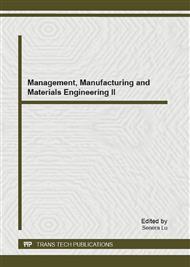p.190
p.196
p.200
p.209
p.216
p.222
p.227
p.232
p.237
Evaluation of Sensorial Qualities of Fruit Wines by Kohonen Neural Network
Abstract:
Sensorial qualities of fruit wines were compared by clustering due artificial neural networks. A Kohonen network has been used as a software tool in order to increase the human skills in this kind of application. Seven wine samples were used in this work, which the five samples were of Barbados cherry wine, one sample of peach wine and one sample of grape wine. 50 consumers chosen to perhaps had been used to obtain the sensorial data using a hedonic scale of 1-9 times. Sensorial values of flavor, aroma and appearance obtained of the hedonic dating were compared. Results showed that Kohonen network classified the Barbados cherry wines in distinct group, for frequency among yours sensorial responses. Kohonen network results were similar or better than statistical classification, this shows that the use of Kohonen algorithm in the sensorial analysis of wines is valid. Kohonen algorithm is very good in clustering of Barbados cherry wine samples and it uses in sensorial analyses of wines is promises.
Info:
Periodical:
Pages:
216-221
Citation:
Online since:
December 2012
Price:
Сopyright:
© 2013 Trans Tech Publications Ltd. All Rights Reserved
Share:
Citation:


